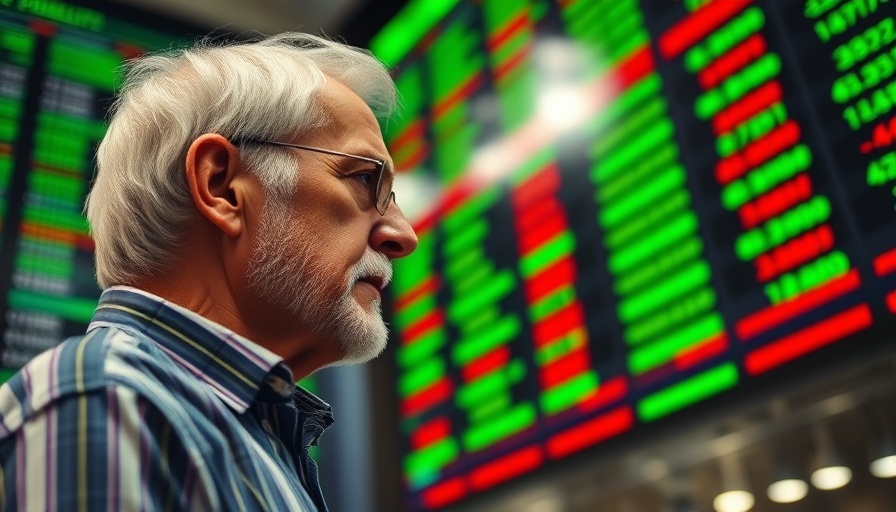
Understanding Current Economic Risks from Tariff Policies
Recently, Chicago Federal Reserve President Austan Goolsbee raised alarms over the potential inflationary effects and economic risks posed by trade tariffs implemented under the Trump administration. According to Goolsbee, while hard economic data appears robust, trade tariffs could lead to rising prices and depressed consumer behavior if retaliatory actions from other countries escalate. This dual-fold risk, he indicates, hinges on how much tariffs can disrupt supply chains, as increased costs could put pressure on not just consumers but also businesses that heavily rely on intermediate goods.
The Tariff Landscape: A Historical Perspective
Historically, tariffs have played a controversial role in the U.S. economy. They are intended to protect domestic industries by making imported goods more expensive; however, the counter-effect is often a price increase on consumer products. Tariffs imposed during the Trump era saw significant pushback from sectors reliant on international supply chains. This echoes past examples such as the Smoot-Hawley Tariff of 1930, which is widely regarded as a misstep during the Great Depression. Learning from history, it’s vital for today's policymakers to weigh the potential inflationary pressures against the benefits of protecting domestic industries.
The Connection Between Tariffs and Inflation: Bridging Theory and Reality
Goolsbee posits that while a one-time tariff might only cause a temporary hiccup in inflation—a perspective that reflects traditional economic thinking—the fear lies in the potential for tariffs to spawn broader economic uncertainties. If businesses and consumers alter their spending behaviors in response to tariff announcements, that could result in a significant slowdown in economic growth. The idea of businesses "freaking out" at the thought of increased costs suggests a precarious consumer climate where confidence is sensitive to policy changes.
The Broader Economic Implications
Another dimension to consider is how tariffs affect various investment strategies. For finance-savvy individuals, understanding economic indicators such as inflation trends and consumer confidence can inform investment decisions. During periods of rising tariffs, sectors such as real estate and dividend stocks, which often provide stable returns, may become appealing choices for risk management in investing. Market actors should also keep an eye on ETF investing options tailored to mitigate risks associated with inflation.
Sector-Based Investing: Identifying Opportunities Amid Uncertainty
Focus on specific sectors during periods of economic volatility can yield valuable insights for portfolio diversification. For instance, technology stocks may exhibit resilience against tariff impacts due to their unique market positions and demand trends. Meanwhile, sustainable investing funds are gaining traction as investors seek assets not just for profit but to support ethical practices. Understanding the interplay between tariffs and sector performance can provide investors with a competitive edge in navigating market fluctuations.
Addressing Common Misconceptions About Tariffs and Investing
Misunderstandings abound about how tariffs directly link to investment strategies. One common myth is that higher tariffs unequivocally lead to higher stock market volatility. While certainty around tariff impositions can instigate short-term fluctuations, not all sectors respond uniformly. Investors should focus on data-driven assessments rather than assumptions based on broad economic theories.
Actionable Insights: Strategies for Navigating Tariff-Driven Inflation Risks
In light of the inflation risks specified by Goolsbee, investors can adopt several strategies: consider reallocating portfolio weighting toward sectors that typically fare well amid inflation, such as commodity ETFs or dividend stocks. Additionally, employing a dollar-cost averaging strategy can help mitigate the impact of price changes over time. Being proactive with investment education can prepare investors for uncertain economic times, ensuring they remain resilient through market fluctuations.
A Final Thought: The Importance of Being Informed
As Goolsbee points out, the behaviors of both consumers and businesses heavily influence economic outcomes. The essential takeaway here is the importance of being informed. Investors and consumers alike should strive to understand the broader economic landscape and how policy decisions can translate into market realities that affect financial planning. By staying informed, one can better position themselves to make educated investment decisions in uncertain times.
Ultimately, the fluctuating landscape of tariffs requires keen observation and adaptable strategies from consumers and investors alike. Monitoring how tariff regulations evolve and understanding their implications can provide valuable insights that can shape investment approaches, lead to sound portfolio diversification, and optimize overall financial strategy.
 Add Row
Add Row  Add
Add 



Write A Comment